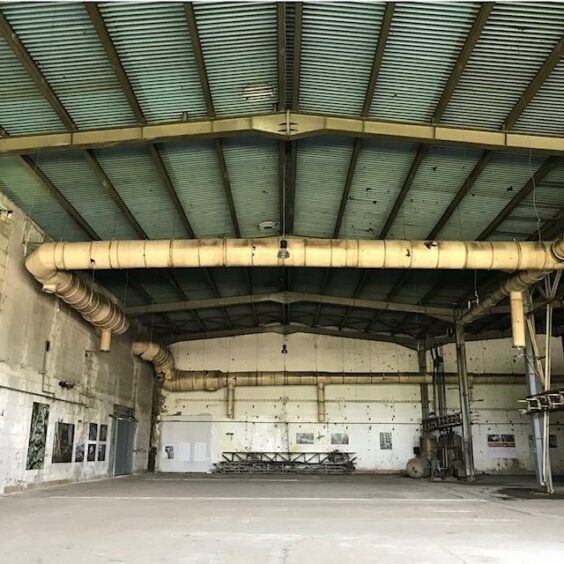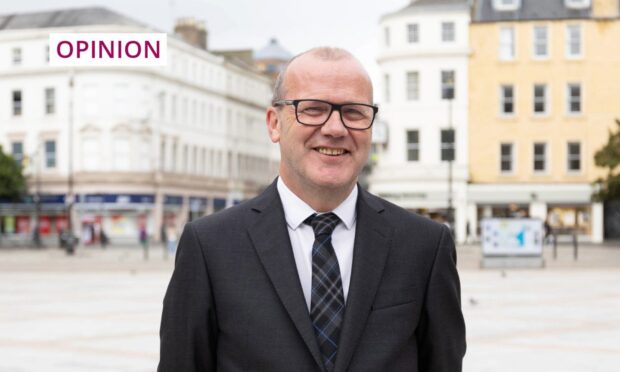Russian aggression on the Eastern Ukrainian border shows us just how thin the threads of peace are – and how easily they can fray in the complex tapestry of global politics.
A distracted UK Government, a US President who recently stepped back from responsibilities in Afghanistan, a new and untested German Chancellor and a French President facing elections all provide a very fertile ground for Russia’s President Putin to play in.
With a reported 150,000 troops amassed on the border, this is clearly more than a flexing of the Russian bear’s muscles.
The Secretary of State for Defence Ben Wallace, once a serving soldier himself, noted yesterday that you only build field hospitals on the border if you’re serious about pending conflict.

The price of peace appears to be an assurance from the West that countries like Ukraine and Georgia can never join NATO.
That they must remain in a holding pattern, prevented from forging greater alliances with the West – even if that’s what their people want and vote for.
It has got me thinking about other countries across the globe facing a similar plight.
Stable enough to go unreported but still handcuffed to the railings of the past and barred from any real and sustained progress.
They have found peace but no prosperity.
Suffering runs deep among survivors in Bosnia
Bosnia tops that list. It’s a country I have had the great privilege of visiting a few times as part of Remembering Srebrenica delegations.
That’s the charity established to mark the genocide that took place in Srebrenica in 1995 – when over the space of 10 days 8,000 Bosnian men were slaughtered by Serbian forces because of their religion.
I’ve been in the former battery factory in Srebrenica that the UN forces took over to use as a refuge.
The numbers arriving were so great, women and children were separated from their husbands, brothers and sons.
The men were encouraged to flee for the next town and many of them died as shells rained down on the hillside while they walked through the forests to Tuzla.
I’ve met men who lost brothers and sons in those woods.
Men who survived 10 days walking on a bag of sugar and the kindness of strangers.
They retell their trauma to anyone who will listen in the hope that it cannot be repeated.
Sarajevo cannot shake off links to war
Sarajevo is one of the most beautiful cities I have ever visited.
It’s important to remember that as since it’s name is too commonly associated with atrocity.
It’s a city full of back alleys, street stalls and coffee culture.
Men moulding intricate brass coffee sets on the steps of their small shops sit side by side with high street retailers.
We have a small painting in our house of central Sarajevo where you can see all the city’s places of worship side by side – a picture of peace.
The city sits in a majestic valley with the river Maljacka running through it.
Several beautiful bridges cross it and on the corner of one you’ll find a tourist attraction – the place where Franz Ferdinand was shot in 1914.
The city just cannot escape its association with war.
A nation paying the price for its past
Today it’s a city where east literally meets west. Where Bosnians and Serbs live in peace by sharing power.
That was a central part of the Dayton agreement which ended the war in 1995.
But it was only ever a sticking plaster. A stop gap.
Without sustained political stability there has been very little economic progress and a gaping cavity has amassed behind that temporary filling.
Sarajevo should be on everyone’s long weekend list, yet tourism is still a fledgling industry.
Those who do travel are shown the shelled high rise flats and the burnt down TV station.
Maybe they’re taken to the venues built for the 1984 Winter Olympics, a moment of pride but very much a past glory.
In the absence of serious economic progress, Bosnia’s biggest peace time battle is with brain drain.
Young Bosnians, brought up by parents who survived the horrors of war, want out.
They get their education and go, seeking better lives in Germany, Austria and Slovenia among other European nations.
It’s lead the UN to warn that Bosnia’s population could halve by 2050 if this pattern isn’t reversed.
Fate of Bosnia has echoes for Ukraine
Bosnia and the Ukraine are very different countries but the story of one’s past should inform the other’s future.
With the prospect of conflict in the Ukraine, we should look back at the last major conflict since the Second World War on European soil and learn where we can.
"I've been a soldier…You don't deploy strategic weapons systems, you don't build field hospitals, if you're just going for a training exercise"
Defence secretary @BWallaceMP says there is a continued increase of Russia forces despite withdrawal claims.@AasmahMir | @StigAbell pic.twitter.com/OotjTL87DF
— Times Radio (@TimesRadio) February 16, 2022
The hollowing out of Bosnia leaves an ageing population haunted by its past.
A muscular Russia emboldens the Serbs here.
They attempt to rewrite history and deny the genocide ever took place.
Temperatures rise and people find comfort in dark places and ideas.
Western diplomacy may yet prevent a Russian incursion into Ukraine but the price of that peace may well be lost decades of progress for a country that wants to look west.
That’s hardly victorious.




















